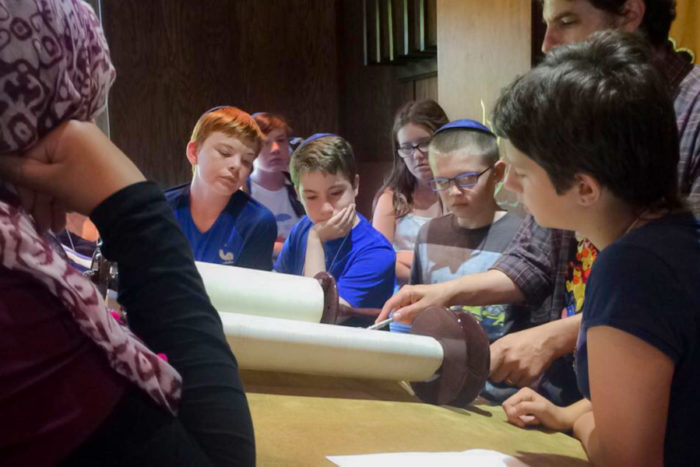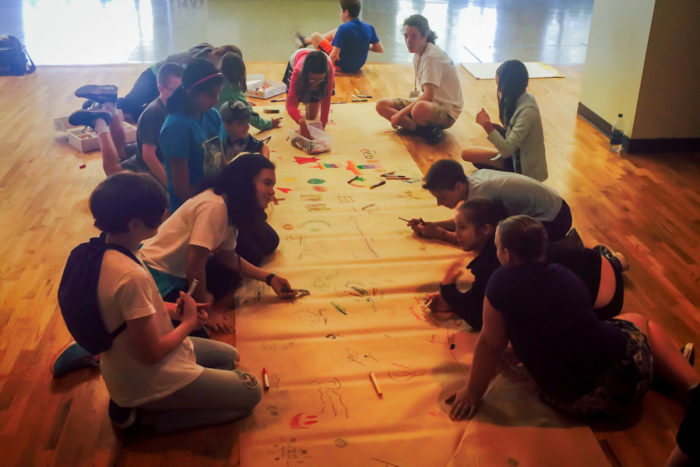
Most of my life I’ve attended Islamic schools and lived in a tight-knit Muslim community. I’d never even heard of other religions beyond the Abrahamic faiths, and really didn’t understand what the people outside my circles believed in.
Attending a non-Islamic school for the first time in eighth grade was a shock. I realized how different my practices and ways of thinking were from non-Muslims.
My hijab and religious practices were foreign to those around me and I had to explain them often. I was suddenly forced into the role of ambassador for all Muslim students. But surprisingly, even after eight years of attending an Islamic school, I realized I wasn’t actually that well prepared for such a role.
It wasn’t until I started getting to know people with different religious backgrounds — Christians, Buddhists, and Catholics — that I truly learned about Islam and started falling in love with my own religion. But I also learned to respect other religions. I wish I’d had this experience before I started high school, so that I could have become more aware of the beauty of interfaith dialogue.
My younger sister Hinda will have that opportunity, thanks to an internationally renowned organization called Kids4Peace.
The organization was founded in 2002 in Jerusalem and is dedicated to ending conflict and creating interfaith leaders. The Seattle chapter began three years ago. Each summer they have a middle school day camp that brings together local kids of different religions.
I tagged along with my sister as she attended the camp, and throughout the week I learned more what Kid4Peace stands for, and what interfaith dialogue is all about.
The campers were 18 middle school students who came from different parts of Washington and different faith backgrounds. They were Muslims, Jews, and Catholics, Universal Unitarians and more.
To understand their diversity and stories, they had daily dialogue sessions with Pam Orbach, a camp counselor at Kids4Peace who also does restorative justice work in the Bellevue community. The kids learned about the importance of trust, listening to one another and learning about the people they meet on a personal level.
“I learned that we should stop fighting between religious communities and sort of break down the walls between religious communities,” said Max, a 13-year-old from Mercer Island who was a part of the camp. Max said he learned a lot about other religions and even learned more about his own religion, Judaism.

The part of the camp fascinated me the most were the interfaith sessions, where the kids learned about different religions.
As a Muslim, I know the dangers of misinterpretations of one’s religion. Islamophobia is on the rise because people learn about Islam on the internet and don’t actually speak to people who following the religion. It was satisfying to see my sister learning about her peers’ religions directly from them.
Throughout the week the campers visited different places of worship: the Oromo Community Center, which has a place of worship for Muslims; St. Mark’s Cathedral, an Episcopalian church; Colam Pagoda, a Buddhist Temple and Herzl Ner-Tamid, a synagogue.
The visit to the conservative synagogue was the most eye-opening for me. Judaism is an Abrahamic religion, just like Islam. I always was told there were similarities between the faiths but didn’t realize it was so similar.
As we walked into the synagogue, the educational coordinator Eliyahu Krigel invited us to have a Kosher lunch. I’d completely forgotten that Jewish people had dietary restrictions just like Muslims.
As we finished our lunch, we toured the synagogue and heard stories of the prophets from the Torah. Some of them sounded exactly like stories I knew from the Quran and Bible! We also learned how just like Islam, the Jewish faith has many names for God. As we were discussing that, Malcolm McLaurin, a camp counselor, brought up how in Christianity they describe the Holy Spirit in many ways as well.
As we left the synagogue, I was really in awe at how similar religions can be. At times in the past, I felt like religions were against each other, or in some kind of race, but made me realize how simple it is to live with one another.
Martina a fourteen-year-old from Kirkland. who has been a part of Kids4Peace for three years and was a youth camp counselor this year, agreed. Martina spoke to me about the importance of interfaith dialogue and interfaith community.
“I think it’s important to learn more about other religions,” she said, “but it’s important to understand yours to understand other religions.”
This post has been updated to correct the spelling of Temple Herzl-Ner Tamid.

